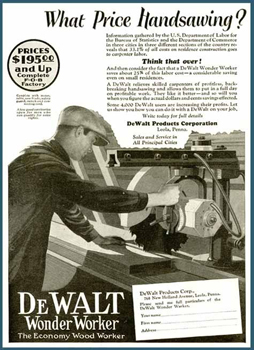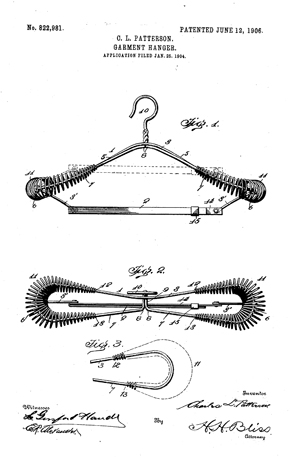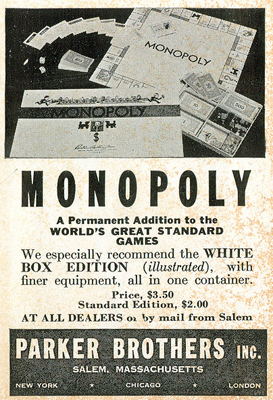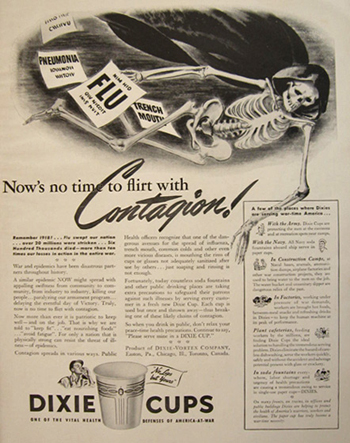Question from Quinn R.:
Hello Geek,
Did Max Factor patent lipstick?
Quinn
Author: Invention Geek
 Raymond E. DeWalt followed in the family tradition working in mills and construction. The jobs were difficult and labor intensive. DeWalt was always looking for ways to cut costs, make jobs easier and be more efficient. His solutions often included creating machines to help with the work.
Raymond E. DeWalt followed in the family tradition working in mills and construction. The jobs were difficult and labor intensive. DeWalt was always looking for ways to cut costs, make jobs easier and be more efficient. His solutions often included creating machines to help with the work.
This ingenuity eventually led to DeWalt becoming the supervisor of a woodworking mill that produced a bit of everything from boxes to houses. The workload at the mill was more than the employees could handle. The company would not increase payroll to hire more help. DeWalt had to, instead, find ways to make his current staff more productive. To make this happen, DeWalt began designing more devices and machines.
One of these machines would become the first radial-arm saw. DeWalt created a special yoke which was attached to an electrical powered saw then mounted to a standard arm. The saw was then movable. It could be raised, lowered, slid back and forth, moved to an angle or tilted to make a bevel. This new saw was extremely useful and allowed one man to do the work of four. Labor costs were cut in the mill while productivity was greatly increased. Continue reading “The First Radial-Arm Saw”
“…The way out is not to slash and burn, it’s to innovate.”
– Steve Jobs
This week we mourn the loss of one of the greatest innovators of our time.
Steve Jobs, founder, long-time CEO, and chief creative genius behind all things Apple passed away Wednesday at age 56.
In his lifetime, Jobs brought us new ways of experiencing technology life that we likely may not have thought of on our own. In fact, the Man Behind the Mac has been named on some 313 issued patents. That’s excluding any applications that may have failed to make the cut and whatever countless other innovations he may have influenced that were never patented.
Even more amazing is the variety of items he had his hands in designing over the years. Steve Job’s design patents cover everything from the iconic round mouse and the packing for the iPod to the glass stairs in Apple Store.
Here are just 5 of Job’s most interesting creations: Continue reading “Steve Jobs, A Legend in Innovation”
 The coat hanger was invented in response to a lack of coat hooks in an office building in Jackson, Michigan in 1903. Albert J. Parkhouse worked for Timberlake Wire and Novelty Company which made lampshade frames and other wire items. One day, he arrived at work to discover that all the coat hooks were occupied. Parkhouse did not like having his winter coat getting wrinkled on the back of a chair all day. He decided to find a solution.
The coat hanger was invented in response to a lack of coat hooks in an office building in Jackson, Michigan in 1903. Albert J. Parkhouse worked for Timberlake Wire and Novelty Company which made lampshade frames and other wire items. One day, he arrived at work to discover that all the coat hooks were occupied. Parkhouse did not like having his winter coat getting wrinkled on the back of a chair all day. He decided to find a solution.
The company produced wire products so there was always wire laying around. Parkhouse grabbed a piece of this wire and twisted it into in two ovals with the end twisted together to form a hook. Another piece was twisted to fit inside the shoulder of his coat. The last piece curled in the center. His new wire creation allowed him to hang his jacket anywhere.
He continued to perfect his invention. Eventually all of the employees were using hangers created by Parkhouse. The company saw the potential of this idea and they applied for a patent for the invention. Because the hanger was created at work, Timberlake Wire and Novelty Company owned the rights to the product. Continue reading “Twisted Wire = Coat Hanger”
Question from Devin D.:
Hello Geek,
Is it true that Harley-Davidson has a trademark for the sound of its engine?
Devin
 Have you ever wondered how those tiny beads of ice cream that you can buy at the mall and amusement parks are made? Dippin’ Dots are cryogenically frozen ice cream balls made with the same ingredients as regular ice cream. The ice cream treat was invented by microbiologist Curt Jones in 1987.
Have you ever wondered how those tiny beads of ice cream that you can buy at the mall and amusement parks are made? Dippin’ Dots are cryogenically frozen ice cream balls made with the same ingredients as regular ice cream. The ice cream treat was invented by microbiologist Curt Jones in 1987.
In 1987, Jones was working on research for new techniques for freezing bacteria on a large scale. He developed a process for making cattle feed by freezing it in chucks at 350-degrees below zero to preserve the nutritional content. One day, while making ice cream with his neighbor, he had an idea to use a flash-freezing technique to freeze the ice cream. The frozen treat would retain the flavor of ice cream but have none of the iciness.
Six months of research and experimentation resulted in Dippin’ Dots. Flash-freezing the ice cream in liquid nitrogen produced hard balls about the size of a pea. The treat which is stored at 40 degrees below zero and served at 20 below keeps it shape for about 10 minutes at room temperature. The beads slowly melt when eaten. Continue reading “Cryogenically Frozen Ice Cream”
Question from Dylan T.:
Dear Geek,
Did Charles Moncky really invent the Monkey wrench?
Thanks,
Dylan
 Charles Darrow, an unemployed man living in Germantown, Pennsylvania, created the board game Monopoly in the evenings while trying to make ends meet during the day. In the game, all players have the chance to buy and sell real estate. Living during the great depression, this board game gave the hard pressed workers of the time a chance for fantasy and distraction from their difficult lives.
Charles Darrow, an unemployed man living in Germantown, Pennsylvania, created the board game Monopoly in the evenings while trying to make ends meet during the day. In the game, all players have the chance to buy and sell real estate. Living during the great depression, this board game gave the hard pressed workers of the time a chance for fantasy and distraction from their difficult lives.
Darrow showed his new board game to Parkers Brothers executives and they rejected the idea. They stated that the game had at least fifty-two design flaws including that the game was way too long, the rules were difficult to follow, and there was no real goal for the winner. With help from a friend who was a printer, Darrow went on to manufacture the game himself. He sold 5,000 copies to a local Philadelphia department store. The game was hit. Everyone loved it.
Darrow filed for a US patent on August 31, 1935. On December 31, 1935, he received patent #2,026,082 for a board game apparatus.
One of the copies of the game was bought by the daughter of the founder of Parker Brothers. She suggested that her father take another look at the game. Parker Brother decided to license the patent rights from Darrow. Very quickly, Monopoly was selling over 20,000 copies a week. It was the best selling game in 1935. Darrow went from working odd jobs to get by to a very rich man quickly with the success of his game. Continue reading “The True Monopoly History…”
Question from Valerie H.:
Is it true Yankee Stadium was built with special cement Edison himself had invented?
Continue reading “Invention Geek – Yankee Stadium and Thomas Edison?”
 Today, paper cups seem like something that of course everyone uses. No one would ever share a cup with a stranger just to have a drink of water. The diseases that could spread this way are apparent to us all. But until the beginning of the 20th century, this was not the case. Everyone drank out of the same water source with a shared glass, drinking tin or dipper.
Today, paper cups seem like something that of course everyone uses. No one would ever share a cup with a stranger just to have a drink of water. The diseases that could spread this way are apparent to us all. But until the beginning of the 20th century, this was not the case. Everyone drank out of the same water source with a shared glass, drinking tin or dipper.
In 1906, a conference which brought together doctors from across the United States to discuss sanitation conditions on the railroads brought attention to the germs spread by drinking fountains and these shared drinking containers. Lawrence Luellen became interested in the idea of creating an individual drinking cup in 1907. He wanted to have the ability to dispense clean pure drinking water into clean, germ-free paper cups to help the spread of disease.
Luellen invented a water vending machine with disposable cups. With a fellow Bostonian, Hugh Moore, he began a program to educate people about the advantages of individual paper cups. Together they formed the Individual Drinking Cup Company to sell their machines and cups to railroad companies. By 1912, the company had produced a semi-automatic machine to dispense the individual cups they had named Health Cups. Continue reading “Health Cups?”
